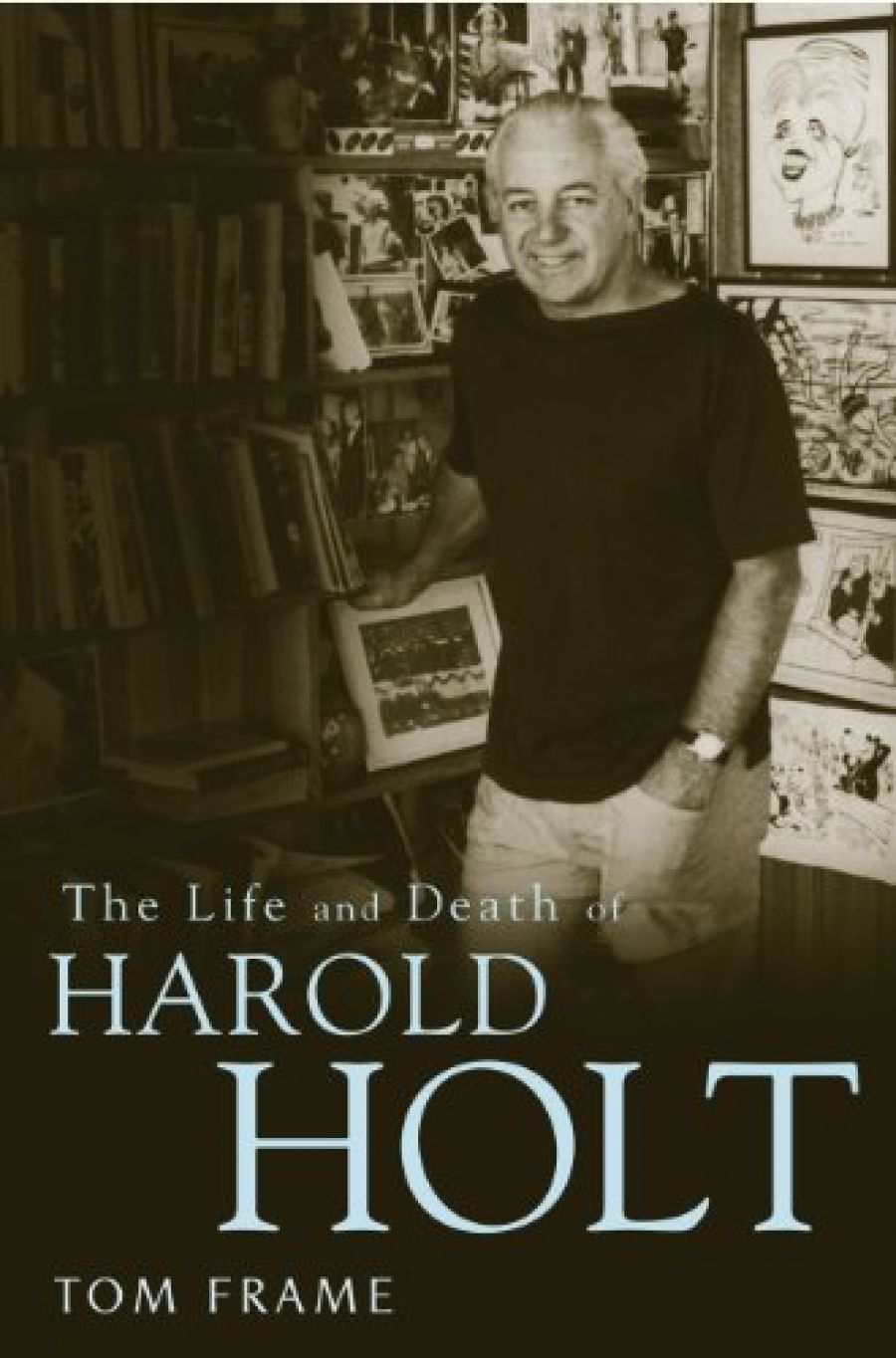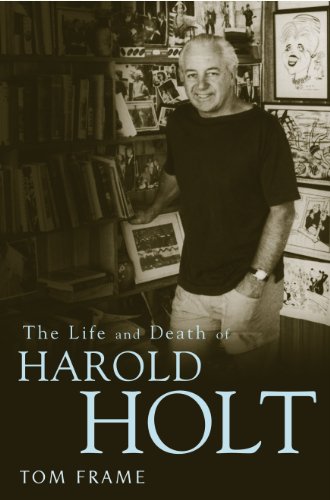
- Free Article: No
- Contents Category: Biography
- Review Article: Yes
- Article Title: Washing away the myths
- Online Only: No
- Custom Highlight Text:
This is not an airport read; anyone wanting colourful stories about Harold Holt’s private life will have to dig deep. Dr Tom Frame, Anglican Bishop to the Australian Defence Force, has written the first substantial biography of Australia’s seventeenth prime minister, who succeeded Robert Menzies in early 1966 and drowned on 17 December 1967. The Life and Death of Harold Holt, about ten years in the making, is a meticulously researched and scholarly work, and should become an essential reference for anyone interested in Australian politics and history. It wasn’t a commissioned work, but Frame deals with his subject sympathetically.
- Book 1 Title: The Life and Death of Harold Holt
- Book 1 Biblio: Allen & Unwin, $35 pb, 392 pp
- Book 1 Cover Small (400 x 600):

- Book 1 Cover (800 x 1200):

There are plenty of surprising revelations, some of which are startling because they are mentioned so matter-of-factly. In 1955 Holt survived a car smash in which his driver was killed. Soon after the attempt on Arthur Calwell’s life, Prime Minister Holt, working late in his office at Parliament House, survived being shot at by a sniper, an event that attracted little publicity but that did result in Holt’s agreeing to have some security, though never at Portsea. However, there is not much personal material. Some fragments about Holt’s lonely childhood, in which he was starved of parental love, are poignant. There is a little about his tempestuous courtship of Zara Dickens (whom he eventually married) and about his romance with Lola Thring, who married his father. Stories about Holt’s extramarital affairs and the truth about his twin ‘stepsons’ are only touched on lightly. As Frame laments, ‘there is no evidence Holt ever planned to write memoirs or an autobiography’. He didn’t keep diaries or write many letters, and there are few surviving sources of reliable information about his personal life.
This book is mostly about Holt’s thirty-two years in public life. It offers some fascinating insights into the political process. Using Holt’s public life as the framework, the author has written a chronicle of social change in Australia. He credits Holt with overseeing the introduction of decimal currency, dismantling the White Australia Policy, bringing on a referendum allowing Aborigines to be counted in the census, and beginning Australia’s engagement with Asia. Overall, the book offers an even-handed account, and Holt’s perceived weaknesses and mistakes are well covered by Frame.
However, Frame believes that Holt has suffered ‘unfair personal and professional denigration’ because of the infamous ‘All the way with LBJ’ speech he made at the White House during the Vietnam War, and because of the ‘hullabaloo’ surrounding his premature death.
I was just twenty when Harold Holt became prime minister of Australia. The Holts lived down the road from us in Melbourne and had a beach house on the clifftop in Portsea, not far from our family’s holiday house in Sorrento. Back then it was unremarkable if the prime minister went spear-fishing on his own. It wasn’t unusual for the prime minister to drive himself to the milk bar or to drop in on friends unexpectedly, even wearing a wetsuit and carrying a bag of fish. I remember him turning up at our house one day with a freshly speared butterfish. My father, who was always after butterfish for the shark hook, was delighted. Almost two years later, on a summer’s afternoon, I drove past the Holt’s house in Melbourne. Holt was out the front throwing things into the boot of his car, obviously off to Portsea for the weekend. When he saw me, he waved cheerily. No reason to remember that wave except, just a couple of days later, he disappeared into the surf off Cheviot Beach.
I have always believed it was simply a tragic accident. Cheviot is a wildly beautiful but very dangerous place. The surf was big, with a strong undertow, and Holt was overwhelmed by the waves, possibly hitting his head on rocks. His body was never found. Local knowledge supports informed opinion, sought by Frame, that Holt’s body may have been trapped in kelp under a ledge and swiftly consumed by sea lice and crayfish.
People were incredulous that a prime minister could just vanish. There were some extra-ordinary theories about what ‘really happened’. Holt was said to be a Chinese spy, spirited away in a submarine; he had committed suicide; or he had swum around the point into the arms of a lover and fled the country. Frame confronts the most bizarre conspiracy theories surrounding Holt’s disappearance and tests them rigorously. He uses extraordinarily detailed investigation to discredit the story about the Chinese submarine. He analyses and debunks rumours that Holt faked his own death and argues convincingly against suggestions of suicide.
I think he comes closest to the truth with this start-ling revelation: ‘although [Holt] spent a great deal of time in the sea and could tread water for hours, he did not like swimming and was not a strong surface swimmer.’


Comments powered by CComment